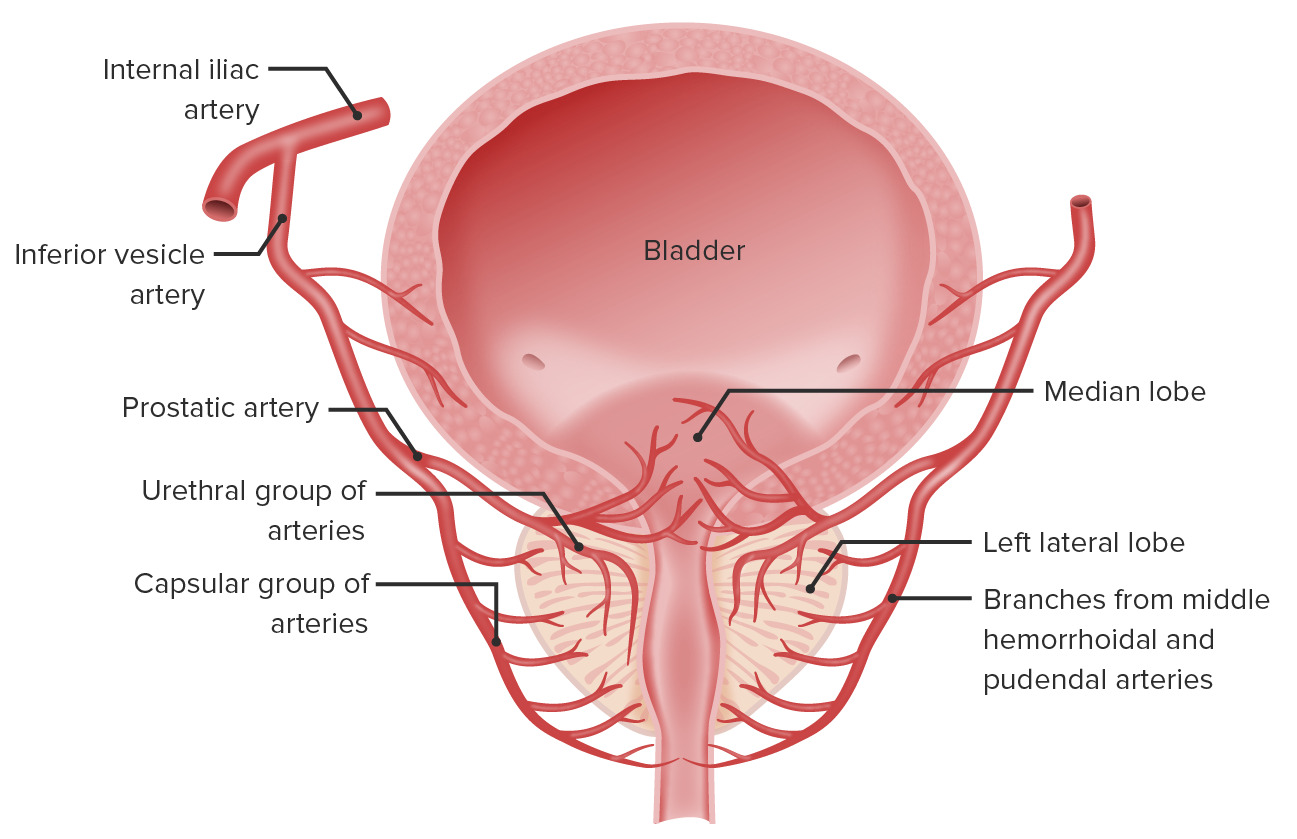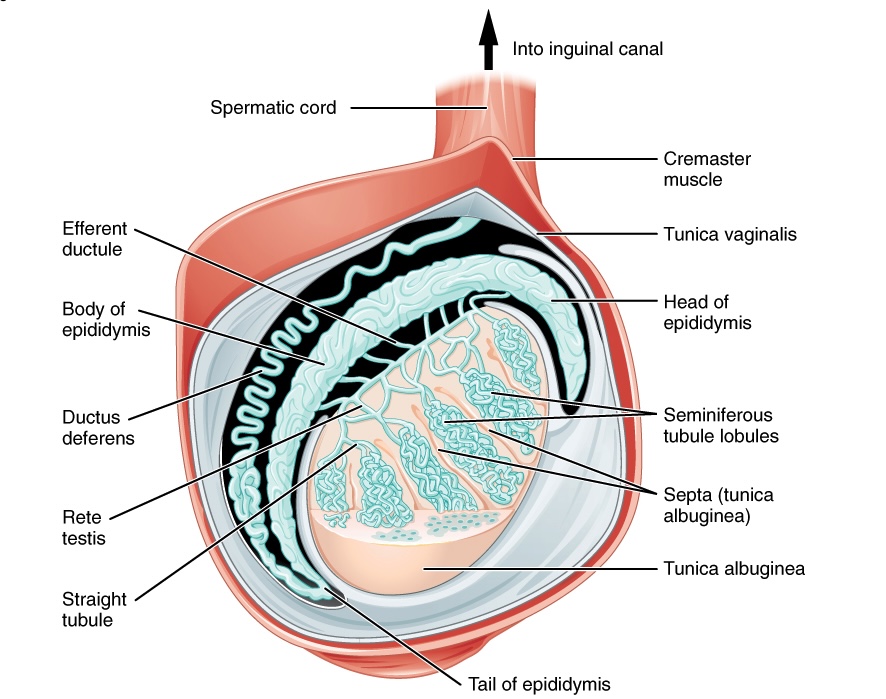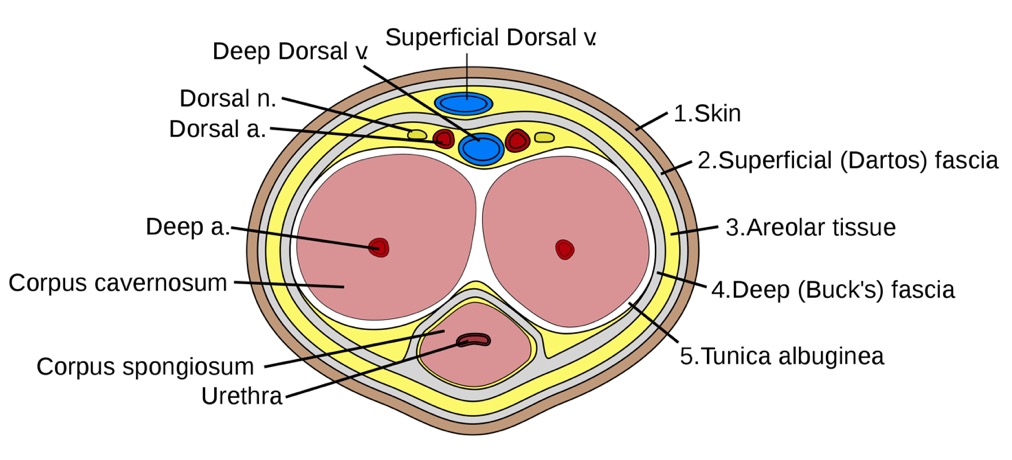Playlist
Show Playlist
Hide Playlist
Ductus Deferens and Spermatic Cord – Male Reproductive System
-
Slides 07 Human Organ Systems Meyer.pdf
-
Reference List Histology.pdf
-
Download Lecture Overview
00:01 The vas deferens again is very different. The ductus deferens or vas deferens is a muscular tube. It has a lot of smooth muscles wrapped around it. And the layers of smooth muscle are orientated in different directions, again, to ensure very rapid force of all expulsion of the spermatozoa in the lumen during ejaculation. The epithelium also contains stereocilia, and sometimes the epithelial forms this longitudinal fold, which often might seem quite a characteristic structure when you compare them with other ducts, and not only in the male reproductive system, but in other tubes of the body. Probably the most distinguishing characteristic here though is the very, very thick smooth muscle layers around the wall. Here is a section through the spermatic cord. The spermatic cord at least contains a number of components. 01:14 On the left-hand side of this section, the tube or the very small lumen and the thick muscular wall is the vas deferens or ductus deferens. Other structures you see here that dominate are blood vessels, more towards the right-hand edge of the section. Those blood vessels consist of components or branches of the testicular artery, and also, veins of the pampiniform plexus. When I spoke about the testis in another lecture, I explained that the testis has to be maintained outside the body cavity. Spermatogenesis only occurs if the temperature of the testis is about two to three degrees below normal body temperature. And that’s achieved because the blood vessel supplying the testis, the testicular artery, coils as it moves down towards the testis, and it has a very intimate relationship to the veins that drain the testis, the pampiniform plexus of veins. And those veins carry cooler blood back to the body, back to the heart. 02:38 And the relationship between the testicular artery, being very coiled, and this pampiniform plexus enables the blood to become to be cooled by these veins as it passes down towards the testis. That’s the primary role of this pampiniform plexus. It’s the primary structural specialization that cools the testis by cooling the blood leading to the testis. You can’t see it clearly on this slide, but if you look very carefully around the vas deferens, the rather red stained regions represent section through the cremaster muscle. The cremaster muscle lifts the testis or lowers the testis in the scrotum. Scrotum also has a duct muscle through it and that contracts or relaxes. And this process of contracting or relaxing creates the scrotum as being rather a tight sac holding the testis or rather a loose flaccid sac, and that’s designed to conserve heat loss or create heat again in a cold temperature, for instance, or heat retention in cold temperatures that scrotum will contract and wrinkle to maintain or at least reduce heat loss. So you have this variety of mechanisms designed to make sure the testis operates at a temperature below body temperature.
About the Lecture
The lecture Ductus Deferens and Spermatic Cord – Male Reproductive System by Geoffrey Meyer, PhD is from the course Reproductive Histology.
Included Quiz Questions
Which of the following statements regarding the role of the pampiniform plexus in temperature regulation for spermatogenesis is MOST ACCURATE?
- It cools the temperature of the arterial blood entering the testis.
- It cools the venous blood entering the abdomen.
- It warms the arterial blood entering the testis.
- It warms the venous blood entering the abdomen.
- It play an insignificant role in temperature regulation for spermatogenesis.
The network of many small veins found in the male spermatic cord is called the...?
- ...pampiniform plexus.
- ...inferior hypogastric plexus.
- ...superior hypogastric plexus.
- ...testicular spermatic cord vein.
- ...spermatic cord heat exchanger.
Which of the following muscles raise and lower the testes in order to regulate scrotal temperature for optimal spermatogenesis?
- Cremaster
- Rectus abdominis
- External abdominal oblique
- Internal abdominal oblique
- Buccinator
Which of the following helps regulate the temperature of the testes?
- Scrotum
- Prostate
- Mediastinum of testis
- Seminiferous tubule
- Seminal vesicle
Customer reviews
5,0 of 5 stars
| 5 Stars |
|
5 |
| 4 Stars |
|
0 |
| 3 Stars |
|
0 |
| 2 Stars |
|
0 |
| 1 Star |
|
0 |






